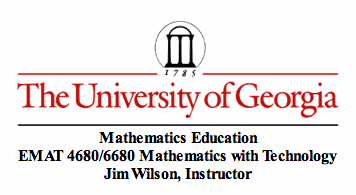

1. The centroid (G) of a triangle is the common intersection of the three medians. A median of a triangle is the segment from a vertex to the midpoint of the opposite side.
Using Geometer's Sketchpad (GSP), I have constructed the centroid (G) below for various shapes of triangles.


Specifically for right triangles, we see the centroid (G) in these circumstances as follows:

Now, I will prove Ceva's Thereorm and afterwards show that the concurrency of the medians is a corollary of Ceva's Theorem.
Statement of Ceva's Theorem: If three Cevians AE, BF, and CD are concurrent at G, then
.
Proof of Ceva's Theorem:
Notation: A(AGF) = Area of triangle AGF.
Now, we assume that the Cevians AE, BF, and CD are concurrent at G. We will show that
.
Looking at triangles AGF and CGF, we see that segment GF is the height for both of these triangles. Call this height h.
Then,
and
.
(equation 1)
Similarly, looking at triangles BAF and BCF, we see that:
(equation 2)
From equation 1 and equation 2, we see that:
(equation 4).
Now focusing on the other two sides of the triangle, we will write down the next two equations as the ratios of the appropriate areas.
(equations 5 and 6)
Taking the product of 4, 5, and 6, we have that
. Q.E.D.
We note that the converse of Ceva's Theorem is also true. In other words, if
, then the Cevians AE, BF, and CD are concurrent.
Since Ceva's Theorem has been proved, to show that concurrency of the medians is a corollary of Ceva's Theorem, we simply use the aforementioned converse.
Statement: Medians of a triangle intersect at a point of concurrency.
Details:Let AE, BF, and CD be medians of the triangle ABC. Since the medians connect vertices to the midpoints of the edges of a triangle at opposite sides, we see that
.
So each of the ratios are 1 and therefore so is their product. Using the converse of Ceva's Theorem, we have that the medians AE, BF, and CD are concurrent. Q.E.D.
Return to Amena's homepage